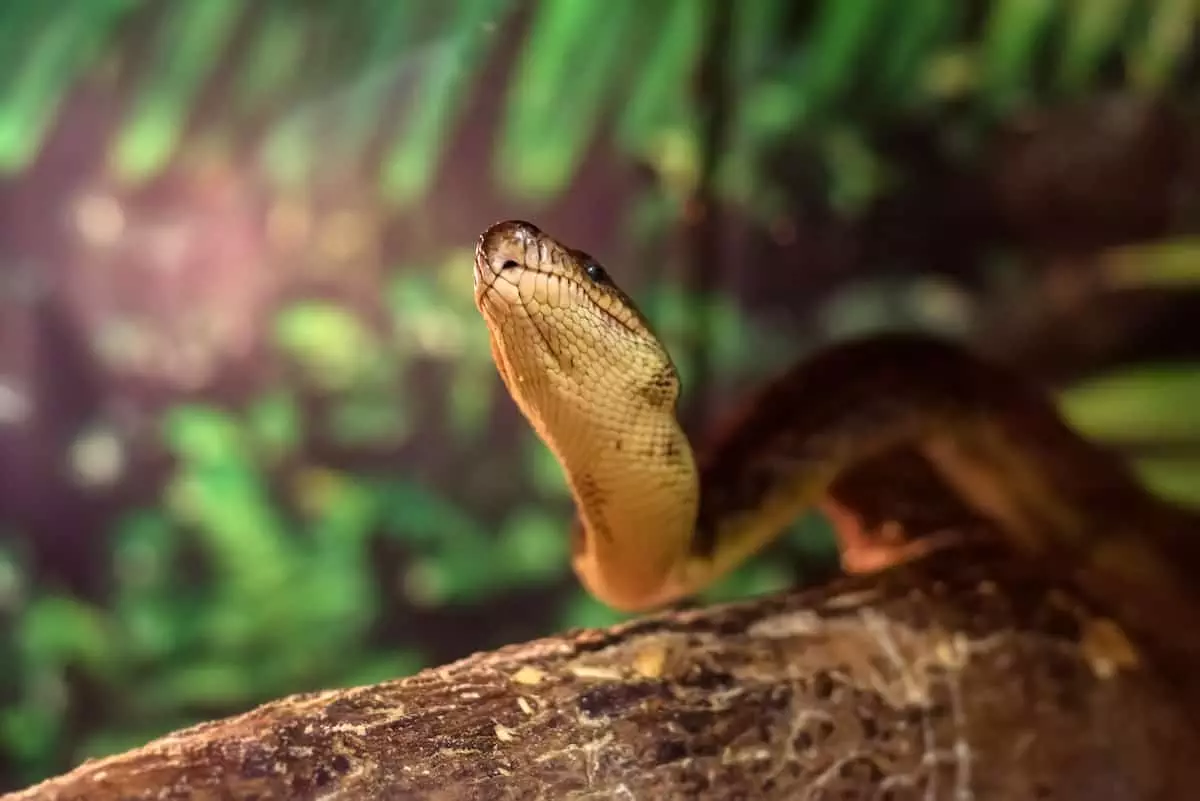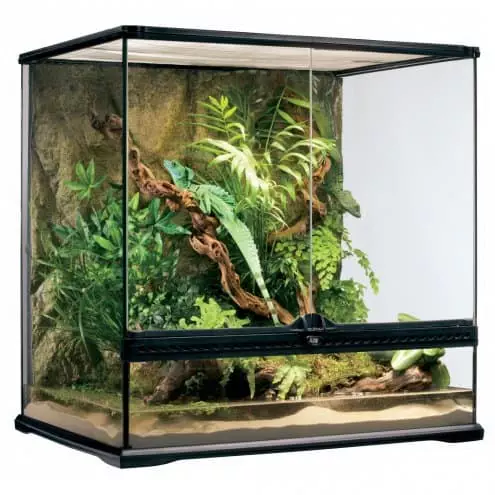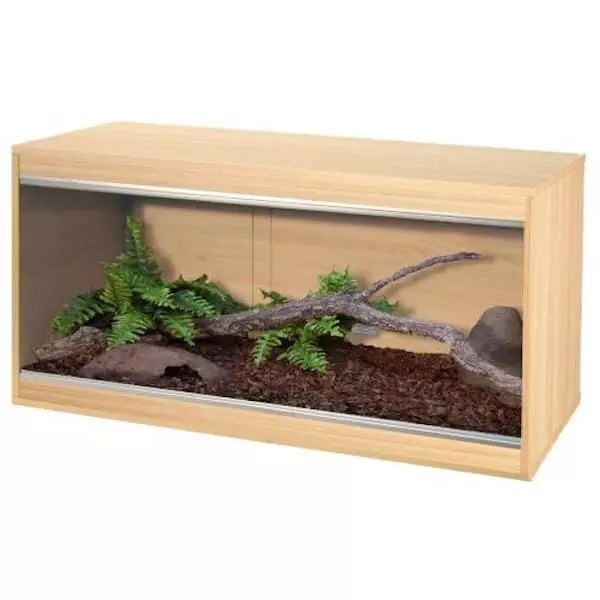If it’s your first foray into the world of reptiles and amphibians, understanding what type of living environment you need to buy your new exotic pet can be incredibly confusing.
It can, therefore, be confusing trying to understand which one you need or if there is even a difference between the two given their near-identical appearance.
But don’t get your head in a spin just yet, because we’re here to help you understand!
What’s the difference between a terrarium and vivarium?
Simply put, a terrarium is a container for growing plants in, whereas a vivarium is an enclosure in which animals live.
Vivarium is a catch-all term, which could be used to describe everything from a rabbit hutch to an ant farm. Terrariums, on the other hand, are almost exclusively glass or plastic structures used to grow and contain plants.
But ever since people began keeping reptiles and amphibians as pets, it’s become apparent that terrariums also make fantastic homes for our scaly friends, and so when used for that purpose, technically become reptile vivariums!

The reason for all the confusion is that pet stores continue to refer to glass or plastic reptile homes as terrariums to help best differentiate them from traditional wooden reptile vivariums.
So although they might all look the same to you, the difference between a terrarium and traditional reptile vivarium is actually material, and so depending on what type of pet you have, one may be more suitable than the other.
Purchasing a terrarium or vivarium for a reptile
A reptile terrarium is usually a tall, glass or plastic container, which can contain and care for plants. Much like a fish tank, it is accessed from its roof and is usually most suitable for smaller lizards and amphibians.
A reptile vivarium usually comes in the form of a long wooden cabinet with a glass or plastic screen door for viewing and accessing your pet. Unlike a terrarium, these are not designed to be able to grow plants and are usually more suitable for large lizards like Bearded Dragons, as well as snakes.
You may also consider purchasing a paludarium for certain amphibians, a kind of terrarium which also features aquatic elements.
Still confused? Read this more detailed explanation below.
What is a Terrarium?

In Latin, terrarium translates as ‘place of land’, and it’s a word used to refer to any transparent container designed to raise and grow plants.
Terrariums essentially act as small greenhouses and are a popular and stylish way of displaying flora in your home. Their glass or plastic material allows concentrated sunlight to help plants grow, and they are also waterproof meaning you can water plants without damaging the container.
A large part of the confusion between vivariums and terrariums is likely down to the fact that reptiles have not always been kept as pets.
When people first began housing reptiles, they’d often empty out an aquarium or use a terrarium to put their scaley pets in.
Understandably, it wasn’t then in their thinking to suddenly start referring to it as a vivarium just because they’d popped a lizard in it!
Therefore pet stores still refer to glass structured reptile houses as terrariums, because until your pet moves in… that’s what they are!
What is a Vivarium?

Coming from the Latin word ‘vivere’, meaning to live, vivarium is a term that can be used to describe any area for raising or keeping animals. However, it is mostly used to describe domestic reptile habitats.
In the reptile world, vivariums tend to either be converted terrariums or specialised wooden cabinets with glass doors.
Unlike terrariums, a traditional wooden vivarium is not accessed from the top and will always have a cover for its roof, preventing a reptile from escaping.
Because of their material, they are also not waterproof, and it’s unlikely you’d be able to grow plants or a pretty garden for your reptile.
Therefore they are usually more suitable for reptiles who are used to drier, more desert-like surroundings, as you can still mimic their natural habitat without becoming a professional gardener!


